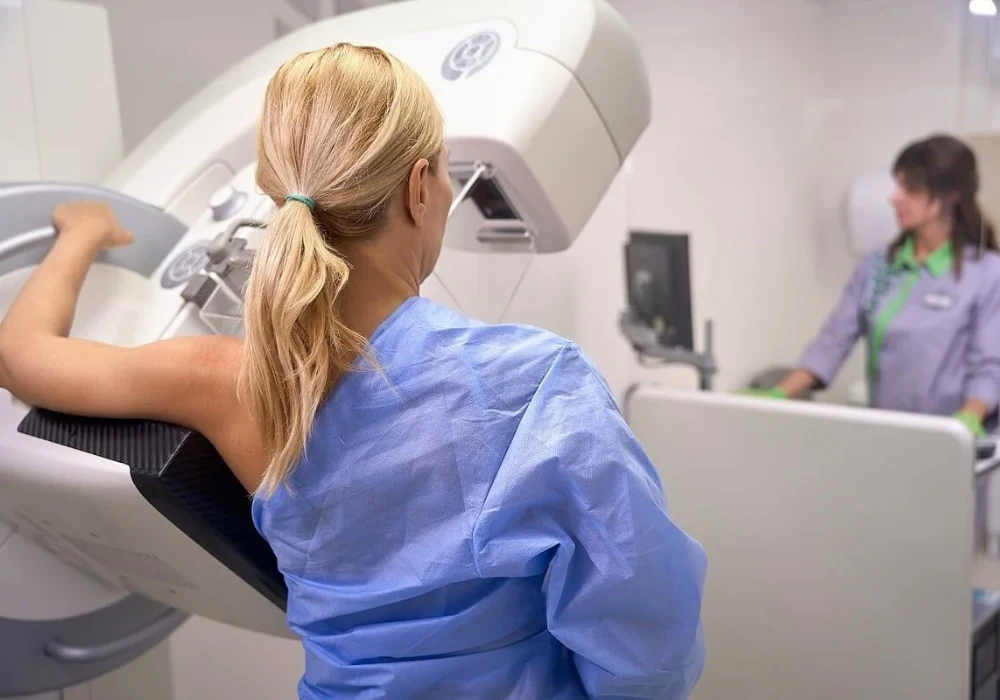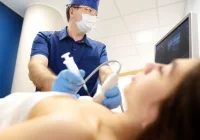Dense breast tissue can hide tumours on mammography and is independently linked to higher breast cancer risk. Digital breast tomosynthesis (DBT) is widely used for screening women with dense breasts, yet debate persists on the value of other supplemental tests. Molecular breast imaging (MBI) uses technetium 99m sestamibi to highlight functionally active lesions that may be occult on mammograms because of density. A prospective, multiyear, multicentre trial across five USA sites evaluated whether adding MBI to DBT increases cancer detection in women with dense breasts. Participants underwent two annual rounds of DBT plus MBI, enabling assessment of incremental cancer detection and other performance measures at the initial prevalence screen and the subsequent incidence screen.
Prospective Multicentre Design and Cohort
Women aged 40–75 years with dense breasts presented for screening DBT and were enrolled from July 2017 to July 2022. Eligible participants were asymptomatic and had C or D density on a recent mammogram. Exclusions included recent whole-breast ultrasound, prior MBI, breast MRI or contrast-enhanced mammography, pregnancy or lactation, current treatment for breast cancer or high-risk lesions, risk-reducing medication use or recent breast procedures. A total of 2978 women completed the first round and 2590 completed the second. The mean age was 56.8 years ± 9.3, most were postmenopausal, and 82% had heterogeneously dense breasts with 13% extremely dense. By Tyrer-Cuzick modelling the lifetime risk was less than 20% in 88% of participants, indicating a largely average-risk cohort.
Must Read: Shortening Breast MRI Time Without Missing Cancer
DBT comprised bilateral craniocaudal and mediolateral oblique tomosynthesis views with either full-field digital mammography or synthetic two-dimensional views per site practice. MBI followed intravenous injection of 8 mCi technetium 99m sestamibi, with bilateral planar views acquired for 10 minutes per view on dual-head cadmium zinc telluride gamma cameras. Board-certified breast radiologists interpreted DBT and MBI independently, blinded to the other modality. DBT was graded per BI-RADS, MBI used a validated lexicon with assessments paralleling BI-RADS. Positive MBI was defined as categories 3–5. If either test was positive, an integrated read directed diagnostic work-up. MBI findings could prompt further evaluation when DBT was negative, but a negative MBI could not downgrade DBT-based recommendations. One-year follow-up after each round established cancer status using histopathology or benign/negative imaging, chart review or participant contact.
The primary endpoint was incremental invasive cancer detection rate (CDR) from adding MBI at the prevalence screen. Secondary endpoints included overall CDR, sensitivity, specificity, recall and biopsy rates, positive predictive values and interval cancer rate. Exploratory analysis assessed advanced cancers defined by size, nodal status, metastases or receptor status.
Higher Detection with Modest Impact on Recall
At year 1, DBT alone detected 5.0 cancers per 1000 screenings, whereas DBT plus MBI yielded 11.8 per 1000, giving an incremental CDR of 6.7 per 1000. Invasive detection rose from 3.0 per 1000 with DBT to 7.7 per 1000 with DBT plus MBI, an invasive incremental CDR of 4.7 per 1000. At year 2, DBT alone and MBI alone each detected 5.8 cancers per 1000, while the combination detected 9.3 per 1000, corresponding to an incremental CDR of 3.5 per 1000. Invasive detection at year 2 increased from 1.5 per 1000 with DBT to 3.9 per 1000 with the combination, an invasive incremental CDR of 2.3 per 1000.
Across both rounds, 30 lesions in 29 participants were seen only with MBI. Most of these incremental cancers were invasive, with a median invasive lesion size of 0.9 cm, and 90% were node negative. One fifth were advanced cancers. In year 2, MBI showed more than twice as many invasive cancers and four times as many advanced cancers as DBT. Interval cancers were uncommon, occurring at 0.7 per 1000 in year 1 and 0.8 per 1000 in year 2. Two interval cancers in year 2 arose outside the field of view of DBT and MBI and were later visualised during diagnostic MRI.
Adding MBI increased recalls and biopsies, though the effect lessened at the second round. The recall rate rose from 8.6% with DBT to 17.9% with DBT plus MBI in year 1, an increase of 9.4 percentage points, and from 8.9% to 13.8% at year 2, an increase of 4.8 points. Biopsy rates increased from 2.5% to 5.5% in year 1 and from 2.3% to 4.1% in year 2 with the addition of MBI. Positive predictive values of recall and of biopsies performed did not materially change with the combined approach at either round.
Safety, Tolerability and Practical Considerations
Among 5568 combined screenings, adverse events were infrequent at 0.18% and were limited to mild or moderate symptoms such as light-headedness or nausea related to injection, transient breast or rib pain after imaging and mild rash. No serious adverse events were reported. The trial notes that concerns about additional radiation have hindered MBI adoption, yet the benefit-to-risk ratio is within the mammography range and considered safe for routine screening. MBI is described as well tolerated and relatively inexpensive, with improving biopsy capability. Technetium 99m has an excellent safety profile with no contraindications except pregnancy and a very low reaction risk. In contrast, iodinated contrast for contrast-enhanced mammography carries an anaphylaxis risk and long-term gadolinium retention from MRI has unknown risk.
The design required independent reads and integrated management, but the order of DBT and MBI was not randomised. The evaluation focused on MBI as a supplement rather than a standalone screen, although independent interpretations allowed estimation of MBI performance alone. The prevalence-to-incidence reduction in incremental detection is consistent with depletion of a reservoir of previously masked cancers, and the year-to-year drop in MBI-associated recalls aligns with the availability of prior comparisons.
In a large, multicentre setting of women with dense breasts at largely average risk, adding molecular breast imaging to digital breast tomosynthesis increased overall and invasive cancer detection at both prevalence and incidence rounds, with a modest increase in recalls by the second year. Incremental cancers found only with MBI were predominantly invasive and node negative, with a small proportion advanced. Adverse events were rare and mild. These results support the role of MBI as a supplemental functional technique alongside tomosynthesis for dense breast screening, offering earlier detection of cancers that may be missed on mammography due to tissue density.
Source: Radiology
Image Credit: iStock
References:
Hruska CB, Hunt KN, Larson NB et al. (2025) Molecular Breast Imaging and Digital Breast Tomosynthesis for Dense Breast Screening: The Density MATTERS Trial. Radiology; 316(3):e243953.










